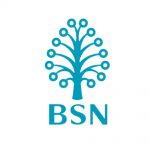Course Info
Information is crucial to an organisation and when this information is communicated in writing, the quality of such communications can have a significant impact on business performance and decision making. Effective business writing is concise, accurate, unambiguous, logical and easily understood. This intensive two-day course will help delegates to develop the skills necessary for successful business writing – be it reports, e-mails, letters, minutes of meetings or proposals.
What Will I Learn From This Course?
Write business documents to a professional standard and conforming to acceptable formats
Present information in an organised, structured way so as to achieve a specific objective
Use a business-like style and vocabulary, while displaying sensitivity to different levels of reader expertise
Express ideas with confidence and clarity, supporting persuasive and logical arguments
Methodology
Course Outline for This Programme
Basic principles of written communication
- Clarification of objectives
- Audience analysis
- The 5c’s of Writing
Planning To Write
- Why write?
- What am I trying to accomplish?
- What is the scope?
- Overcoming myths about writing
Basic Principles of English Grammar, Usage and Vocabulary
- Parts of speech
- Past, Present and Future tenses
- Use of connectors/linking word
- Use of precise language –active vs passive
- Use of appropriate vocabulary in a business setting
- Use correct punctuation, capitalization, abbreviations, and number formats
Common Problems In Writing
- Common errors
- Packaging expressions
- Wordiness
- Unnecessary redundancies
- Being ambiguous or vague
Techniques for Writing
- Mind Maps
- Brainstorming
- Free Flow Technique
Writing Clear, Concise and Professional e-mails for Impact
- Improve your ability to communicate via email and ensure your message is understood.
- Write with your audience’s expectations in mind.
- Use words and phrases that will improve comprehension and ensure professionalism.
- Apply techniques to turn negative language into positive language and remove emotion from
your writing. - Adopt techniques to proof your document for spelling, punctuation and appropriate tone.
Write Minutes Clearly, Concisely and Professionally
- Recognize the importance of taking minutes clearly, concisely and objectively
- Develop key minute -taking skills, including listening skills, critical thinking and organization
- Distinguish relevant from irrelevant points
- Recognise definite decisions made and actions required
- Exercise sensitivity in the writing process
- Develop strategies to deal with jargon and technical language
- Remedy many of the challenges that beset minute takers
- Write the different types of minutes and use the appropriate language for them
The Report Writing Process
- Gathering and sorting material
- Presenting information for impact
- Organize the Sections and Component
- Logical and Sequential
- Thinking Skills Builder
- Report Structure, Layout, Format
- Information (including Data) and Details Required
- Quality and reliability of Information
- Presenting information for impact – organize the Sections and Components
- The Numbering System
- Content from Existing Documents, Systems and Experts
- Where the data is best placed
- Using bullet points and list
- Tables, charts and illustrations
- Numbering and captions
Using appendices and - references
Prepare a Polished, Correct Final Draft
- Drafts to Final Copies – Reviewing, Proofreading and Editing
- How Good is Your Proofreading?
- Writing Impressive Conclusions
- Writing Precise Executive Summaries
- Checking Writing Effectively for Spelling, Punctuations, Grammar, Structure, Vocabulary,
- Producing and presenting a clear, concise and effective business document
Mr. Salwin Singh Gill is a Business Communications/Soft-Skills trainer with more than 30 years’ experience in banking, insurance, training as well as teaching/lecturing at institutions of higher learning. He specializes in Interpersonal and Communication Skills, Business Communication, Negotiaton Skills, Professional Business Writing, Technical Report Writing for Engineers, Internal Audit Report Writing and Academic Writing Skills. He also prepares students for the IELTS, MUET and TOEIC certifications together with Cambridge ESOL suite of exams.
He is a Certified Trainer (PSMB/HRDF) and holds a Bachelor of Arts (Hons) in Business Administration (U.K.) together with a Diploma in TESOL from the London Teachers Training College. He is a member of the Society for Editors and Proofreaders (SEPF - U.K.) and the Society for Technical Communications (STC - U.S.) and also consults organizations in areas of documentation design, development and editing/proof-reading.
Salwin has conducted various in-house training and public programmes, both for the corporate and public sector; some of the recent and notable ones being for: Agrobank Bhd, PETRONAS, UEM Bhd, Suruhanjaya Syarikat Malaysia(SSM), Royal Brunei Technical Services, Mitsubishi Motors, Panasonic Malaysia, Majlis Bandaraya Iskandar Puteri, Keretapi Tanah Melayu( KTM), Malaysian Association of Hotels (MAH), Suruhanjaya Pengangkutan Darat Awam (SPAD), Labuan Financial Services Authority, Curtin University - Sarawak, Technip Oil & Gas, KKEB Group Bhd, Johor Port Bhd, SME Bank Bhd, Jabatan Perkhidmatan Awam (JPA) and Malaysian Communications and Multi - Media Commission of Malaysia (MCMC), to name a few.
He delivers his training sessions in an interactive, practical, easy to understand manner and believes in creating rapport and engaging his audience. Furthermore, he adapts and contextualizes his training to meet the trainees’ abilities and requirements for optimum transfer of learning to the workplace.




